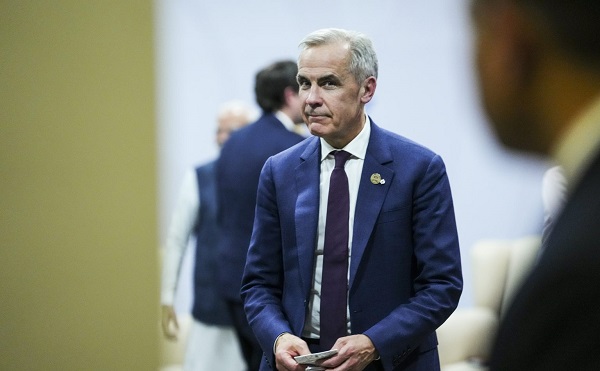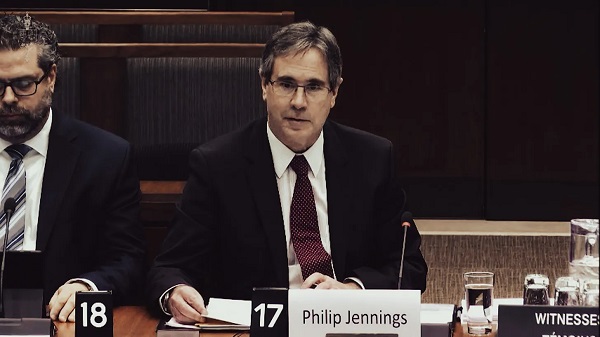Uncategorized
Trump barrels into G-20 summit after nixing Putin meeting

BUENOS AIRES, Argentina — President Trump opened two days of diplomacy at the Group of 20 summit in Argentina on Friday after his abrupt decision to cancel a meeting with Russian President Vladimir Putin overshadowed the proceedings before they even started.
Trump was greeted warmly at the Casa Rosada by Argentine President Mauricio Macri, a longtime business acquaintance. Posing for photos in the gilded Salón Blanco, Trump spoke about their longtime personal relationship and said they would discuss trade, military purchases and other issues.
“We’ve known each other a long while,” Trump said, noting he worked with Macri’s father on real estate developments. The businessman-turned-politician joked that when he and Macri first met they’d never have imagined their future roles on the world stage.
Macri is hosting the summit as he struggles with problems at home. He is trying to halt economic turmoil that has caused the steep depreciation of the Argentine peso.
Trump, who arrived in Buenos Aires late Thursday,
Trump tweeted after his arrival: “Arrived in Argentina with a very busy two days planned. Important meetings scheduled throughout. Our great Country is extremely well represented. Will be very productive!”
The signing of the U.S.-Mexico-Canada agreement, or USMCA as Trump refers to it, comes a day before Mexican President Enrique Pena Nieto’s successor is set to be sworn in to office.
After the three countries’ leaders sign the pact, it must be ratified by their respective legislatures. That could prove to be a difficult task in the United States, especially now that Democrats — instead of Trump’s Republicans — will control the House of Representatives come January. Already Democrats and their allies in the
With his “America First” approach, general distaste for multinational deals and habit of insulting allies, Trump typically gets a mixed reception at global gatherings. Coming into this G-20, he faces a series of diplomatic challenges — most notably whether he can strike an agreement with Chinese President Xi Jinping to ease trade tensions that have rattled financial markets.
Trump’s working dinner with Xi is set for Saturday evening. The American president was originally supposed to see Putin that day as well.
The president
Trump showed that the Russia investigation was testing his ability to stay focused on summit business after he blasted the investigation in a fresh tweet on Friday, again calling it a “Witch Hunt!”
Trump’s Friday schedule also includes an informal meeting with Australia’s new prime minister.
One looming question is whether Trump will have a run-in with Saudi Arabian Crown Prince Mohammed bin Salman amid global dismay over the murder of Saudi journalist Jamal Khashoggi. U.S. intelligence officials have concluded that the Saudi crown prince must have at least known of the plot to kill Khashoggi, who was critical of the Saudi royal family. Lawmakers in both parties have called on Trump to at least avoid the young heir apparent as punishment.
But Trump publicly announced his decision to effectively give the prince a pass in the name of “America First,” making vastly exaggerated claims of Saudi military contracts and investments in the United States. The president also views Saudi Arabia as a vital counterbalance to Iranian influence in the Middle East.
Asked Thursday why the two had no meeting scheduled, Trump said: “I would have met with him but we didn’t set that one up.”
Trump has repeatedly rankled allies and has played a largely disruptive role on the world stage. He has slapped tariffs on the European Union, pulled the U.S. out of the landmark Paris Climate Accord and the Iran nuclear deal and suggested he might be willing to pull the U.S. out of NATO if member countries don’t significantly boost their
Zeke Miller And Catherine Lucey, The Associated Press
Uncategorized
Cost of bureaucracy balloons 80 per cent in 10 years: Public Accounts

The cost of the bureaucracy increased by $6 billion last year, according to newly released numbers in Public Accounts disclosures. The Canadian Taxpayers Federation is calling on Prime Minister Mark Carney to immediately shrink the bureaucracy.
“The Public Accounts show the cost of the federal bureaucracy is out of control,” said Franco Terrazzano, CTF Federal Director. “Tinkering around the edges won’t cut it, Carney needs to take urgent action to shrink the bloated federal bureaucracy.”
The federal bureaucracy cost taxpayers $71.4 billion in 2024-25, according to the Public Accounts. The cost of the federal bureaucracy increased by $6 billion, or more than nine per cent, over the last year.
The federal bureaucracy cost taxpayers $39.6 billion in 2015-16, according to the Public Accounts. That means the cost of the federal bureaucracy increased 80 per cent over the last 10 years. The government added 99,000 extra bureaucrats between 2015-16 and 2024-25.
Half of Canadians say federal services have gotten worse since 2016, despite the massive increase in the federal bureaucracy, according to a Leger poll.
Not only has the size of the bureaucracy increased, the cost of consultants, contractors and outsourcing has increased as well. The government spent $23.1 billion on “professional and special services” last year, according to the Public Accounts. That’s an 11 per cent increase over the previous year. The government’s spending on professional and special services more than doubled since 2015-16.
“Taxpayers should not be paying way more for in-house government bureaucrats and way more for outside help,” Terrazzano said. “Mere promises to find minor savings in the federal bureaucracy won’t fix Canada’s finances.
“Taxpayers need Carney to take urgent action and significantly cut the number of bureaucrats now.”
Table: Cost of bureaucracy and professional and special services, Public Accounts
| Year | Bureaucracy | Professional and special services |
|
$71,369,677,000 |
$23,145,218,000 |
|
|
$65,326,643,000 |
$20,771,477,000 |
|
|
$56,467,851,000 |
$18,591,373,000 |
|
|
$60,676,243,000 |
$17,511,078,000 |
|
|
$52,984,272,000 |
$14,720,455,000 |
|
|
$46,349,166,000 |
$13,334,341,000 |
|
|
$46,131,628,000 |
$12,940,395,000 |
|
|
$45,262,821,000 |
$12,950,619,000 |
|
|
$38,909,594,000 |
$11,910,257,000 |
|
|
$39,616,656,000 |
$11,082,974,000 |
Uncategorized
Trump Admin Establishing Council To Make Buildings Beautiful Again


From the Daily Caller News Foundation
By Jason Hopkins
The Trump administration is creating a first-of-its-kind task force aimed at ushering in a new “Golden Age” of beautiful infrastructure across the U.S.
The Department of Transportation (DOT) will announce the establishment of the Beautifying Transportation Infrastructure Council (BTIC) on Thursday, the Daily Caller News Foundation exclusively learned. The BTIC seeks to advise Transportation Secretary Sean Duffy on design and policy ideas for key infrastructure projects, including highways, bridges and transit hubs.
“What happened to our country’s proud tradition of building great, big, beautiful things?” Duffy said in a statement shared with the DCNF. “It’s time the design for America’s latest infrastructure projects reflects our nation’s strength, pride, and promise.”
“We’re engaging the best and brightest minds in architectural design and engineering to make beautiful structures that move you and bring about a new Golden Age of Transportation,” Duffy continued.
Mini scoop – here is the DOT’s rollout of its Beautifying Transportation Infrastructure Council, which will be tasked with making our buildings beautiful again. pic.twitter.com/
9iV2xSxdJM — Jason Hopkins (@jasonhopkinsdc) October 23, 2025
The DOT is encouraging nominations of the country’s best architects, urban planners, artists and others to serve on the council, according to the department. While ensuring that efficiency and safety remain a top priority, the BTIC will provide guidance on projects that “enhance” public areas and develop aesthetic performance metrics.
The new council aligns with an executive order signed by President Donald Trump in August 2025 regarding infrastructure. The “Making Federal Architecture Beautiful Again” order calls for federal public buildings in the country to “respect regional architectural heritage” and aims to prevent federal construction projects from using modernist and brutalist architecture styles, instead returning to a classical style.
“The Founders, in line with great societies before them, attached great importance to Federal civic architecture,” Trump’s order stated. “They wanted America’s public buildings to inspire the American people and encourage civic virtue.”
“President George Washington and Secretary of State Thomas Jefferson consciously modeled the most important buildings in Washington, D.C., on the classical architecture of ancient Athens and Rome,” the order continued. “Because of their proven ability to meet these requirements, classical and traditional architecture are preferred modes of architectural design.”
The DOT invested millions in major infrastructure projects since Trump’s return to the White House. Duffy announced in August a $43 million transformation initiative of the New York Penn Station in New York City and in September unveiledmajor progress in the rehabilitation and modernization of Washington Union Station in Washington, D.C.
The BTIC will comprise up to 11 members who will serve two-year terms, with the chance to be reappointed, according to the DOT. The task force will meet biannually. The deadline for nominations will end Nov. 21.
-

 Business1 day ago
Business1 day agoFederal major projects list raises questions
-

 COVID-192 days ago
COVID-192 days agoCrown seeks to punish peaceful protestor Chris Barber by confiscating his family work truck “Big Red”
-

 Health2 days ago
Health2 days agoOrgan donation industry’s redefinitions of death threaten living people
-

 Artificial Intelligence2 days ago
Artificial Intelligence2 days agoGoogle denies scanning users’ email and attachments with its AI software
-

 Artificial Intelligence21 hours ago
Artificial Intelligence21 hours agoTrump’s New AI Focused ‘Manhattan Project’ Adds Pressure To Grid
-

 Business2 days ago
Business2 days agoBlacked-Out Democracy: The Stellantis Deal Ottawa Won’t Show Its Own MPs
-

 International13 hours ago
International13 hours agoAfghan Ex–CIA Partner Accused in D.C. National Guard Ambush
-

 Agriculture1 day ago
Agriculture1 day agoHealth Canada indefinitely pauses plan to sell unlabeled cloned meat after massive public backlash










